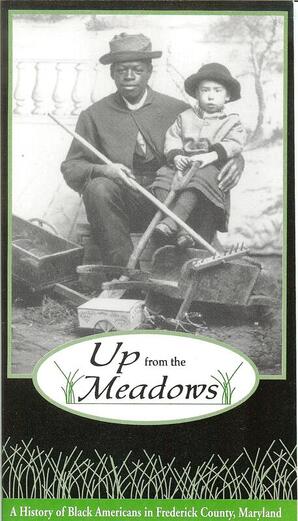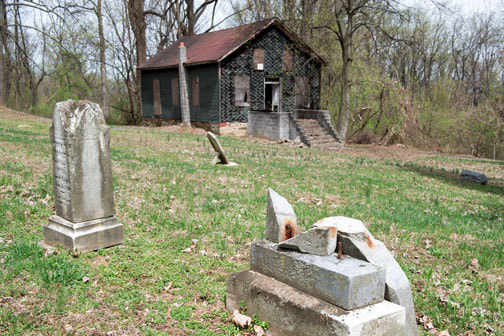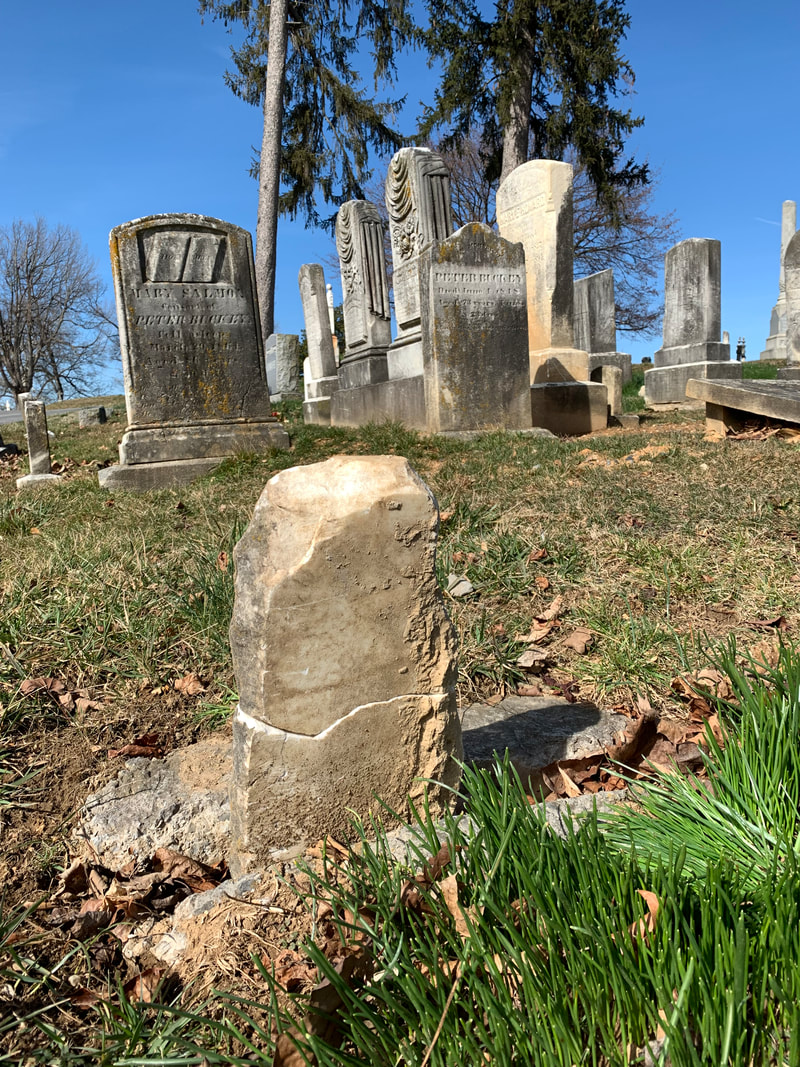|
With Black History Month here once again, I can't help but think about the research I was conducting seven years ago at this time with a special three-part story exploring the first people of color buried here within Mount Olivet Cemetery. This cemetery opened in 1854 and was segregated for its first century of operation. This was no different to Frederick having separate schools for black and white residents, and the same could be true for parks, restaurants and shops. Special entrances were employed for races at places of entertainment like our several theaters, while the Great Frederick Fair had restrooms and water fountains for white patrons and black patrons. It was a different time, and this history is not meant as a shaming lesson, but one of understanding and moving forward as we are all Fredericktonians, Frederick Countians, Marylanders, Americans, humans before we should start separating off into skin, hair or eye color and matters of faith, politics or what sports team or musical stylings one follows. The "Stories in Stone" blog was just months old in February 2017, as I had just started it in November 2016. As a matter of fact, I was still a new employee with Frederick's historic garden cemetery, having begun work as community relations and historic preservation manager in February 2016. I called (what I had thought would originally only be a two-part story) "Sidestepping the Color Barrier: The First Blacks Resident Buried in Mount Olivet Cemetery." This was not my first foray into this subject as I had developed, produced, researched, wrote, shot and edited a 5.5 hour documentary focusing on the Black history of Frederick County, Maryland back in 1996-97 when working for GS Communications' Cable Channel 10. To me, it was soon revealed that Frederick's African-American heritage is a tremendous and dynamic case study of "a border county within a border state." The award-winning video documentary explores the achievements and struggles of local Blacks since the inception of Frederick County in 1745 up through Emancipation in 1864 and the Civil Rights movement 100 years later. The magic of the program was certainly due to the incredible on-camera commentators who shared their research, experiences and stories. I was so lucky to have had so many great mentors and teachers for this, a truly humbling experience.  So, I had a pretty good contextual background to guide me going in search of the very first African-Americans buried here in Mount Olivet. As its been 30 years now since I first had the idea to produce that project with my very supportive employers (the Delaplaine and Randall families), I have put together an adult-learning class to act as a companion to the video. In that same manner, I have continued doing some new research as I truly watch in awe the fine work being done with the local AARCH (African American Resources Cultural and Heritage Society) Group and their work towards opening a research center and museum here in town. Since 2017 and my "Sidestepping" series, I have done a few other subjects connecting to our local Black History and have made connections to some interesting national figures and events. In the process I am putting together a Cemetery walking tour that will help tell a very interesting cultural story, of course employing various gravestones to represent the lives of subjects whose mortal remains lie below. Coming full circle, I began my "Up From the Meadows" documentary with a montage of gravestones in Black cemeteries throughout the county, and posed the question: "If these stones could tell the stories of those they represent." This would eventually become the premise for my blog here. Last September, I stumbled upon a discovery that changes one of the major claims of my 2017 "Sidestepping" article in which I claimed that the first Black individual buried here in Mount Olivet was a woman named Hester Houston in the year 1896. As I said back then, I had been familiar with this individual for roughly 25 years, all due to a book entitled The History of Carrollton Manor by William Jarboe Grove, onetime president and treasurer of the M. J. Grove Lime Company. The noted philanthropist grew up on Carrollton Manor and published his memoir laced history book in 1922. On page 48, Mr. Grove speaks of Hester Houston (whom he misnames Easter Houston) a slave once-owned by his aunt Margaret Lauretta Jarboe(1838-1900): “It was not unusual that some respected colored slave was buried beside her master. I will mention one, Easter Houston, who was owned by William Eagle, she was given to his daughter, Lauretta, the wife of Thomas R. Jarboe, who is buried by their side in Mt. Olivet Cemetery.” Anyway, there is more to the story, and you can read about it for yourself as I am including the links to the three-part story at the end of this blog. I feel that I may have found an individual and person of color who may have been buried 17 years earlier in 1879. With the approaching Frederick Fair at hand, I decided to write a like-themed story on one of the early Fair Board presidents buried here by the name of Edward Buckey (1797-1881). Edward was the man in charge during the Civil War period, one of only three times in which the Fair was canceled, the other two being times of health pandemics in 1918 and 2020. Born in Libertytown, Edward Buckey was the son of Peter Buckey (1775-1848) and Mary Salmon (1778-1864). His father was one of eight siblings born to Matthias Buckey and wife Mary (Hoffman). Two of these were John and George Buckey who would be responsible for helping to create the crossroads town south of Frederick that bears the family name-Buckeystown. John was a tavern-keeper and blacksmith and George was a tanner. Edward Buckey was a longtime farmer who never married. After settling his deceased mother's estate, his family farmstead was sold, and he moved in with his widowed sister, Mary (Buckey) Getzendanner and his three nieces in a townhouse located on Frederick's East Church Street. Mr. Buckey would pass on October 7th, 1881 at the age of 84. His body would be buried in the same burial plot containing his parents in Area F/Lot 33. In looking at our cemetery records, I became especially interested in this grave plot. Edward's father died in 1848, six years before the cemetery opened in May of 1854. He would be the 163rd interment as he would be reburied here in the "new" family plot in early June (1854). At this same time, Edward's sister was removed here as well, having died in 1841, the wife of Daniel Grove Smith. Mr. Smith would remarry first former wife's sister Eleanor. This woman is buried in this lot as well, dying in December, 1855. Edward would eventually lay his mother to rest beside her husband and two daughters in March of 1864, four months before the Battle of Monocacy. Jubal Early and his soldiers passed somewhat near the family farm located south of Butterfly Lane. There is one more person in this lot, and this was the most surprising find of all. She was a woman named Harriet Costly, who had died in 1879. I was familiar with this surname from my "Up From the Meadows" research and immediately recalled this name's association with the greater Libertytown and Mount Pleasant area. Our records state that she was 74 years old when she passed the day after Christmas, December 26th, 1879. Harriet would be buried here three days later. I immediately sought out her obituary without luck, but I already had a transcript of it written in our records but without a source. It reads as follows: "Harriet Costly, an old colored servant in the family of Mr. E. Buckey, East Church Street, died suddenly on Sunday morning last in the 74th year of her age. She was raised in Mr. Buckey's family and was held in high esteem by everyone who knew her as an honest and faithful servant. Her funeral took place Tuesday afternoon. The interment was made in Mr. Buckey's family lot in Mount Olivet Cemetery. Rev. Martin Spiddle officiating." I next went to find her in the census records, and low and behold, found her living with Edward Costly in the 1870 US Census. This was the residence on East Church Street, and the census offered that she was working as a domestic. Amazingly, I would later learn that the townhouse in which Harriet and Mr. Buckey lived (and died) was my home back from 1995 to 1998, the exact time I produced "Up From the Meadows." Perhaps I was channeling her energy? Sadly, I didn't get much further in my research, however, the discovery places her here in Mount Olivet before Hester Houston, making her the first person of African blood here that I know about. However, there is also that situation with another Harriet —that of Harriet Heckman. The downside to the story is that I couldn't find Harriet's gravestone. I searched the Buckey plot for it with no luck, and then had to actually look at the individual grave spots as they are mapped out by way of our cemetery lot card collection. Harriet again is verified as being buried here, but I was perplexed that there was not a gravestone. That's when I called in my volunteer preservation/repair experts, lovingly known as "the Fixers." They carefully excavated the site and found only a base buried beneath the ground's surface. Where was the dye, the upright part of the stone? All they could find was a partial piece of marble with no writing whatsoever. Is this the stone of Harriet Costly? More research needs to be done. Then again, maybe she was buried here "quietly," as well? Was there pushback of any sort after she was buried which would cause the stone to be taken down or hidden? Again, as is the case with Hester Houston, not a lot of fanfare or attention was brought to the burial here of these ladies as to cause "issues." It was a a time when this was "a whites only cemetery." The preservation team just used a piece of buried marble fragment found at the site to mark her grave for now. As I just stated, additional work needs to be done, and a tasteful monument or memorial to Harriet's memory is certainly in order. Perhaps by next February, 2025, I will find myself writing an addendum to this story with news of a marker for Harriet, and hopefully more information about her time among the living.
If you haven't read the 2017 three-part "Sidestepping a Color Barrier: The First Blacks Buried in Mount Olivet Cemetery" series, here are links.
2 Comments
Jan Samet O'Leary
2/19/2024 08:44:10 am
Is it possible to donate to the cost of a stone for Harriet?
Reply
Marian O'Brien
2/19/2024 10:33:50 am
Thank you again, Chris for your extensive research and updated narrative for these 2 women! So grateful to you for bringing their stories to light.
Reply
Leave a Reply. |
STORIES
|
Archives
July 2024
June 2024
May 2024
April 2024
March 2024
February 2024
January 2024
December 2023
November 2023
September 2023
August 2023
July 2023
June 2023
May 2023
April 2023
March 2023
February 2023
January 2023
December 2022
November 2022
October 2022
September 2022
August 2022
July 2022
June 2022
May 2022
April 2022
March 2022
February 2022
January 2022
December 2021
November 2021
October 2021
September 2021
August 2021
July 2021
June 2021
May 2021
April 2021
March 2021
February 2021
January 2021
December 2020
November 2020
October 2020
September 2020
August 2020
July 2020
June 2020
May 2020
April 2020
March 2020
February 2020
January 2020
December 2019
November 2019
October 2019
September 2019
August 2019
July 2019
June 2019
May 2019
April 2019
March 2019
February 2019
January 2019
December 2018
November 2018
October 2018
September 2018
August 2018
July 2018
June 2018
May 2018
April 2018
March 2018
February 2018
January 2018
December 2017
November 2017
October 2017
September 2017
August 2017
July 2017
June 2017
May 2017
April 2017
March 2017
February 2017
January 2017
December 2016
November 2016





















 RSS Feed
RSS Feed